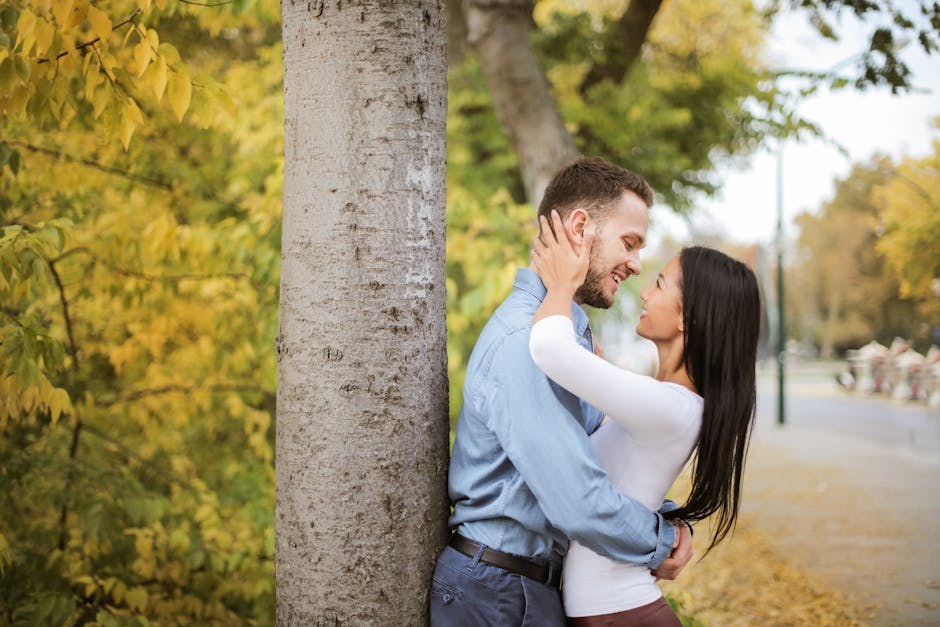We lean in, arms go up, and there’s that instant of warmth where two bodies meet – but what kind of moment is it, exactly? A romantic hug can look deceptively similar to a casual greeting, and a friendly squeeze can be mistaken for something charged. If you’ve ever wondered whether an embrace hinted at chemistry or simply goodwill, you’re in the right place. This guide reframes familiar cues, rearranges the logic behind them, and gives you language for what you already sense – so you can tell a romantic hug from a platonic one without second-guessing yourself.
Why the label matters more than you think
It’s tempting to say the identity of the hugger decides everything – partner equals intimacy, friend equals friendliness. Real life is messier. Partners sometimes offer comfort that feels steady rather than sultry; friends occasionally linger, surprising you with a spark. The stakes can feel high: maybe you’re trying to understand where a budding connection stands, or you’re worried that a colleague’s embrace crosses a line. Spotting the hallmarks of a romantic hug helps you respond confidently and keep your boundaries intact, while recognizing a friendly hug preserves the warmth of everyday closeness without reading too much into it.
Context sets the tone before arms even touch
Every embrace arrives in a scene. A quick hello on a crowded sidewalk frames the touch one way; a slow goodbye outside a quiet doorway frames it another. Lighting, timing, and privacy are unspoken collaborators. A romantic hug is more likely when the moment invites focus – fewer onlookers, softer conversation, and physical proximity that feels intentional rather than accidental. By contrast, public, bustling, and practical settings tilt toward the friendly. None of this decides the outcome on its own, but context primes your expectations and makes the later details easier to read.

One body language, two intentions
Hugs are simple motions with layered meanings. The same arm placement can convey approval, solace, joy, or desire depending on pressure, duration, and where the rest of the body settles. Below is a structured tour through the most common signals. We begin with the classic markers of platonic affection, then move into the cues that typically belong to a romantic hug. The order underscores a helpful habit: rule out the ordinary before deciding an embrace is charged.
Friendly telltales that keep things clear
When an embrace is purely social, it usually aims for connection without entanglement. You can think of these as the “friendly defaults.” They offer warmth while preserving space – literal and emotional.
Light pressure that says hello, not hold. A friendly squeeze keeps the weight off the other person’s torso. The contact reads as a greeting more than a grip, and the arms release quickly. If you’re comparing sensations later, you’ll remember that it felt courteous rather than cocooning – a useful contrast to a romantic hug that drifts into stillness.

Upper-back emphasis. Hands land high – shoulder blades, upper spine – the social “safe zone.” It’s affectionate yet unmistakably platonic. When touch stays away from the waist or lower back, it generally avoids the charged texture that a romantic hug can carry.
Crossed-arm geometry. One arm over, the other under – a symmetrical weave that prevents full chest-to-chest contact. Something about that opposed interlock reads as neutral, a subtle boundary that suits classmates, coworkers, or relatives.
Brief duration with an easy exit. The hug arrives, does its job, and lets go. There’s no lingering silence. This temporal restraint is a cornerstone of friendly touch, while a romantic hug often ignores the clock.

Side-by-side squeeze. The iconic one-arm pull for group photos and quick congratulations avoids front-facing closeness. It’s practical, cheerful, and nearly always platonic.
Reassuring pats. The famous two or three taps on the upper back act like a period at the end of a sentence – a friendly signal that the moment is complete. A pat is conversational; a rub or slow press drifts toward the territory of a romantic hug.
Hip space preserved. Shoulders or cheeks may brush, but waists and hips stay apart. The body forms a gentle angle rather than a full alignment, keeping the embrace firmly in social mode.
Mutual consent that feels effortless. Friendly contact is reciprocal and clearly welcomed. No one steers, squeezes, or encloses the other person in a way that changes the power dynamic. If the moment feels democratic, it is unlikely to be a romantic hug.
When warmth turns into a spark
Romance announces itself with small shifts – a beat held longer, a hand that settles rather than taps, faces that linger close enough for breath to mingle. A romantic hug does not require dramatic gestures; it’s the accumulation of subtle choices that creates a different weather system around the two of you.
Lingering stillness. Instead of a quick squeeze, the embrace becomes an embrace – weight distributes, shoulders relax, and neither person rushes. This pause is the calling card of a romantic hug, especially when it’s unhurried enough to feel like its own conversation.
Full-torso alignment. Chests, ribs, and waists meet with minimal space. The body says, “closer,” and both people answer. That front-to-front fit often separates everyday affection from a romantic hug that feels intimate by design.
Hands that explore softly, not just land. Instead of pats, there’s a slow rub along the upper arm or a gentle sweep at the small of the back. A hand that settles lower on the torso can signal desire; a hand that cradles the neck or jaw can telegraph tenderness typical of a romantic hug.
Facial proximity that invites more. Cheeks press, temples nudge, noses brush. Eye contact often bookends the moment – a look before, a look after – creating an unspoken bridge from embrace to kiss. That visual exchange is a frequent partner to a romantic hug.
Embracing arm placement that encloses. One person’s arms wrap around the other’s upper back or waist in a way that gently contains. The hold can feel protective, even slightly possessive. In balance and with consent, this contour often belongs to a romantic hug; misplaced, it can be overbearing.
Subtle sway or micro-movement. There’s a barely noticeable rocking, a breath that syncs, a few seconds where time drops away. The bodies negotiate closeness and find a shared rhythm – a quiet, reliable indicator of a romantic hug.
Lower-back contact. Touch that rests at the waistline or below usually signals intimacy rather than camaraderie. The sensation is unmistakably different from a polite shoulder hold and regularly marks a romantic hug in practice.
Reduced audience awareness. Attention narrows to the two of you. Street noise fades, conversation pauses, and the world blurs at the edges. That mental tunnel vision often accompanies a romantic hug and is far less common in casual embraces.
Reading the face and hands for clarity
What happens just before and immediately after the embrace can reinforce your read. In romantic scenarios, eye contact tends to lengthen – it’s anticipatory on the way in and satisfied on the way out. A thumb might trace a small circle on the arm, or fingers may interlace for an extra second. In friendly moments, faces brighten but stay animated – quick smiles, quick words, and quick release. If someone seeks your gaze and holds it calmly once you part, the odds tilt toward a romantic hug.
The silent signals of comfort, grief, and care
Not all long embraces are romantic. Comforting a friend in distress can look very similar: extended duration, steady pressure, and quiet presence. The difference is in quality of touch. Supportive hugs often anchor at the mid-back and stay neutral in placement; hands don’t wander, and the energy is stabilizing rather than suggestive. If the moment’s purpose is solace and boundaries remain clear, it’s care – not a romantic hug – even when it lasts.
Before, during, and after – a simple timeline
Before: Notice approach speed, eye contact, and whether arms open from a distance or at the last second. A purposeful, unhurried setup often preludes a romantic hug, while a brisk, practical start leans friendly.
During: Track pressure, hand placement, and hip distance. The trifecta of full-torso contact, lower-back touch, and stillness is a common blueprint for a romantic hug.
After: Watch for a soft beat that lingers – a second of closeness, a whispered remark, a smile that holds. Friendly embraces tend to convert quickly into words or movement; a romantic hug often yields quiet or a look that suggests staying close.
Power dynamics and consent are non-negotiable
Every reading assumes mutual comfort. If an embrace ignores your signals – if someone pulls you in without invitation, squeezes too tightly, or places hands where you haven’t consented – the category shifts from romance vs. friendliness to respect vs. boundary violation. Even gestures that resemble a romantic hug on paper become inappropriate when they override your agency. Healthy touch is cooperative; it listens and adjusts. If you feel uneasy or overpowered, you’re not obligated to decode subtleties – you’re entitled to step back, name the discomfort, and, if needed, report the behavior.
How to check your interpretation in real time
When you’re unsure, a simple internal checklist helps. Ask yourself: Was there space for me to opt out? Did the hug close space at the hips, or did it keep things angled? Were hands moving or resting in neutral spots? Did eye contact invite more? Did the moment stretch past a greeting? A pattern of “yes” answers to closeness, placement, and lingering points toward a romantic hug. A pattern of “no” answers – or clear “yes” answers only to upper-back touch and quick release – points toward friendly.
Common mix-ups and how to untangle them
The celebratory squeeze. During milestones, emotion runs high. Friends hug tighter and longer than usual – but the energy is outward and buoyant rather than intimate. Claps, laughter, and quick words usually follow, distinguishing it from a romantic hug that prefers quiet.
The reunion hold. Long-lost friends often embrace with intensity. The tell: hand placement stays appropriate, hips rarely align fully, and the next move is conversation, not silence. Even when tears show up, the touch expresses relief and nostalgia, not flirtation.
The comfort embrace. As noted earlier, support can last. But supportive touch stabilizes instead of exploring. If anything, the hug loosens slightly to make room for breathing and crying. That practical tenderness separates it from a romantic hug.
Making meaning from how you feel
Your body often identifies intention before your brain writes it down. Pay attention to your immediate impression: did you feel buoyed and safe – or pulled toward closeness? Friendly touch tends to soothe and reset, like a deep breath. A romantic hug can stir, heighten, and focus your attention on the other person. Neither reaction is right or wrong; your feeling is data, and when it aligns with the observable cues – duration, placement, proximity – your read is usually accurate.
Practical ways to respond without awkwardness
To keep it friendly: Angle your body slightly, keep your hands high on the back, and add a light pat before releasing. A cheerful remark right after helps reset the moment.
To welcome romance: Allow full-torso contact, rest a hand at the waist, and let the hug breathe for a few seconds. Eye contact after you part can gently signal that you recognized a romantic hug and were comfortable with it.
To reinforce boundaries: Step in with a side hug, keep one hand visible at the shoulder, and release quickly. If needed, pair it with words – calm and clear – to frame the interaction as platonic.
A flexible checklist you can adapt
While no two relationships are identical, this streamlined set of cues often holds:
Duration longer than a heartbeat suggests intimacy – short and brisk leans friendly.
Hand placement at lower back or neck tends toward romance – upper-back placement reads platonic.
Hip-to-hip contact increases charge – space at the waist decreases it.
Stillness and breath sync can indicate a romantic hug – pats and chatter demystify the moment as social.
Eye contact before/after acts as a bridge – quick glances keep things casual.
When labels shift inside long-term relationships
Partners exchange many kinds of touch throughout ordinary days – practical, playful, and passionate. If a recent embrace from a significant other felt more like a reset than a rendezvous, it doesn’t mean desire has vanished; it may simply reflect the moment’s purpose. A romantic hug often reappears when time, privacy, and energy align. Reading your partner’s touch in context prevents needless worry and makes space to ask for the kind of contact you crave.
What to do when signals are mixed
Unclear moments happen. If you’re receiving cues that straddle categories – a lower-back hand with a quick release, or full-torso contact with lively conversation – let your comfort lead. You can mirror the aspects you welcome and soften the rest. If uncertainty persists, words help. A simple, “I like hugging you,” paired with a smile and slower pace can invite a romantic hug without pressure. Conversely, “Let’s do a quick hug,” said warmly, defines the moment as friendly.
Trusting your read
You don’t need a microscope to interpret ordinary human warmth. Most of us already track these signals subconsciously – we feel the difference and explain it afterward. By naming the cues and watching how they cluster, you’ll notice patterns faster. When several romantic markers show up together – lingering stillness, lower-back touch, full-torso alignment, and quiet – the likelihood of a romantic hug increases. When friendly defaults dominate – upper-back contact, side-angle posture, quick pats, and chatter – you can relax into platonic ease.
A final word on safety and self-respect
Affection should never cost you peace. If someone’s embrace leaves you feeling trapped or disrespected, it’s not your job to reinterpret it as flirtation – it’s your cue to protect yourself. Step back, speak up, and, if necessary, involve support. Clear boundaries make all other kinds of touch possible, whether that’s a comforting squeeze, a celebratory cuddle, or a romantic hug that both people welcome.
In the end, the most reliable compass combines what you observe with what you feel. Use the structure above to decode the moment, then let your body’s response confirm the answer. With a little practice, you’ll recognize a romantic hug when it’s there – and enjoy the warmth of a friendly hug when that’s all it’s meant to be.